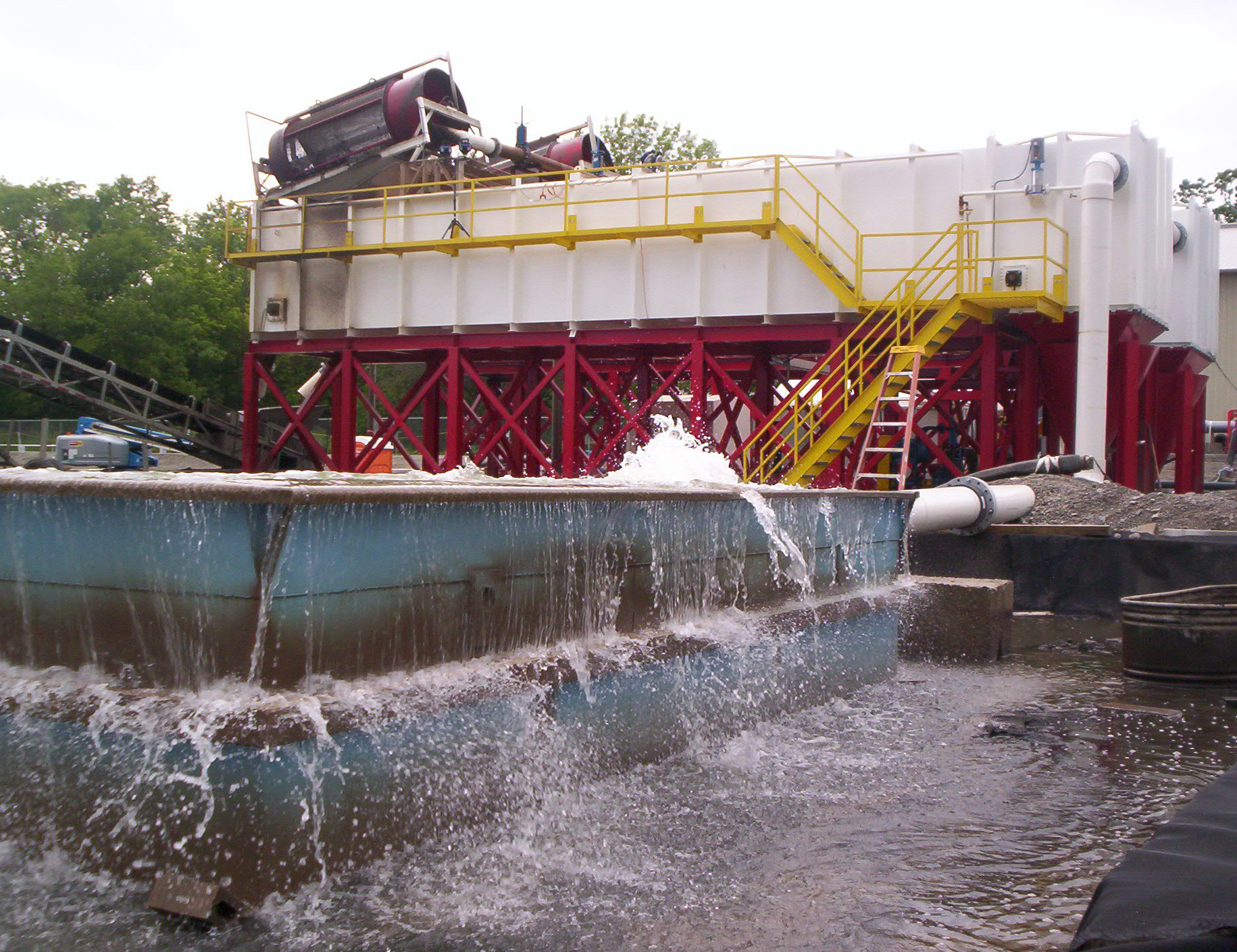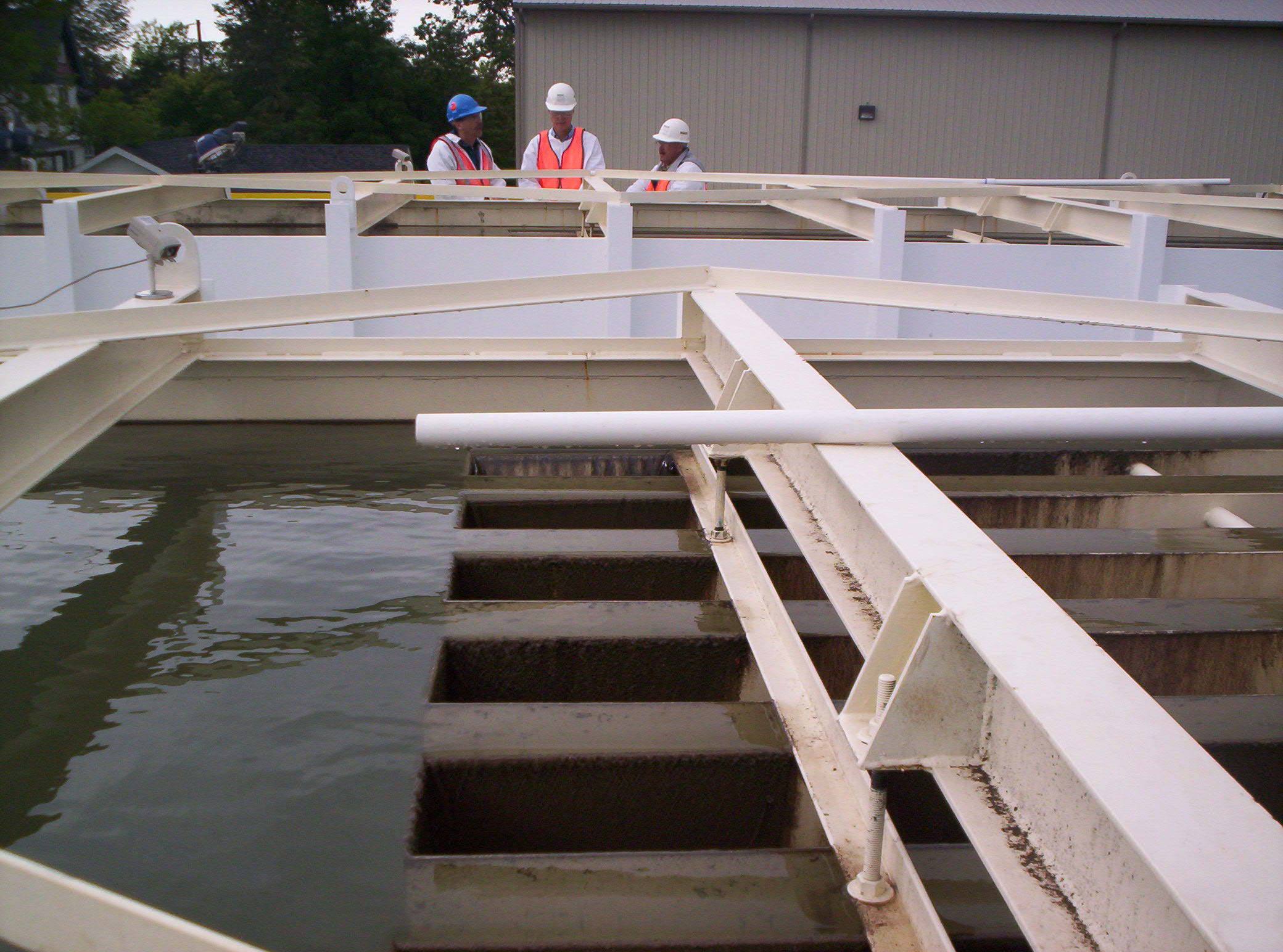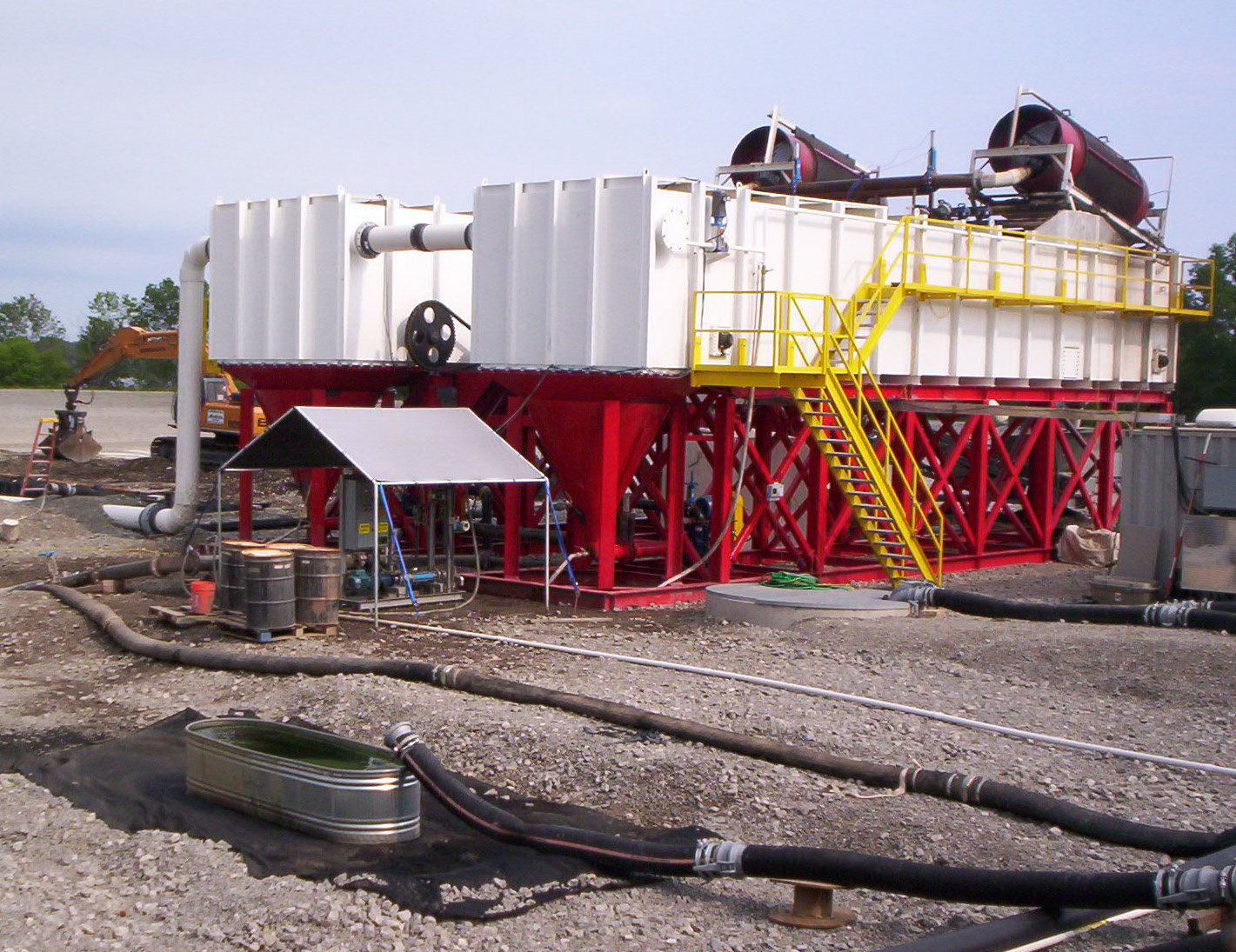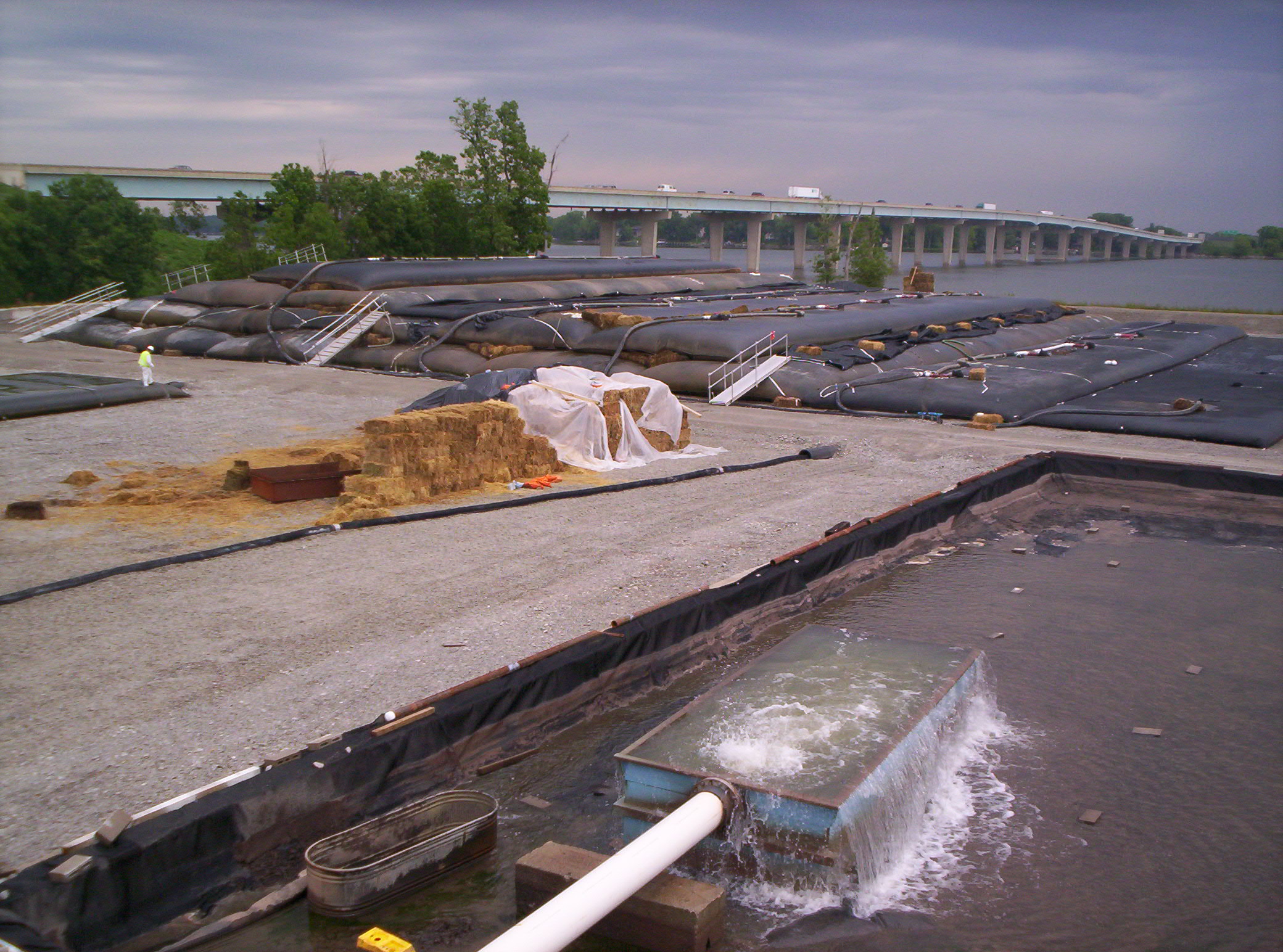Mechanical dewatering in dredged material management is on the rise. Driving the trend are issues such as high contaminated sediment transportation costs and low space availability at many confined disposal facilities. Clarifiers, or what the industry terms as “thickeners,” are often the chosen dewatering treatment tools prior to final dewatering.
Custom-built clarifiers, manufactured by Milwaukee-based Clearwater Industries, were recently used by dredging contractor J.F. Brennan Co., Inc., on the major PCB-contaminated sediment cleanup project at the head of the Lower Fox River in Northeast Wisconsin – a remediation operation that began in June 2004 and is still underway. The clarifiers, which worked in conjunction with a trommel screen, were implemented in 2006 to achieve an optimum solids capture ratio, and to attain the throughput required to meet increased capacity goals of up to 150,000 cubic yards.
Headquartered in La Crosse, Wisconsin, with offices in Illinois and Florida, J.F. Brennan is a leading provider of marine construction services. The company worked with Clearwater Industries to create a water clarification solution that would specifically improve geotextile tube efficiency and performance at the Fox River site.
Geotextile Tube Dewatering Challenges
The initial sediment dewatering system on the Fox River project consisted of a manifold system, the geotextile tubes, a dewatering pad, and a carriage water sump. A cationic polymer was added to the sediment slurry prior to discharge into the geotextile tubes. Carriage water from the tubes weeped through the filter fabric, percolated through the dewatering pad gravel, and flowed to the carriage water sump before being pumped to the water treatment system.
Geotextile tubes, each approximately 60-feet in circumference and up to 200-feet in length, were placed up to four-high in a long row of tubes lying side by side. Stacking was determined to be critical in extending sediment dewatering and drying time, which often ranged from 30 to 60 days.
In 2005, with no water clarification units in place, dredged sediment was directly fed into the geotextile tubes, a process that was limiting for optimal dewatering pad spatial usage.
“Basically, by continually pumping free water into the tubes (and only two-percent sediment), we were creating water balloons. With spatial constraints, we certainly needed to manage the process differently,” says J.F. Brennan Project Manager Matt Binsfeld. “By adding the ‘thickeners,’ we could remove anywhere from 55- to 95-percent of the free water on a daily basis. From a volumetric perspective, it streamlined pad management and allowed us to retain more tubes on the pad for a longer time period,” he says.
It was also found that direct pumping into geotextile tubes led to increased labor costs. The amount of clay and organic matter in the sediment greatly affected its workability, and on occasion, a tube would rupture on the dewatering pad. Rock and stone, which could have been easily scalped off, was also injected into the bags, limiting the tube volume, which could have ultimately been used for the dewatering of finer grained material.
“Crew members would often have to crawl atop the geo-bags to pound the water from them with a vibrating machine that’s similar to a soil compactor. It was labor intensive and cumbersome,” says Clearwater Industries President Bob Gralton.
A Customized Dewatering Solution
Customized to meet J.F. Brennan’s specific needs and application, Clearwater Industries designed and manufactured two clarification units, each equipped with a trommel screen, and each installed ahead of the geotextile tubes. The screens remove plus-1/8-inch debris, separating it out for immediate disposal. The job of the clarifiers/thickeners is to increase the sediment slurry solids percentage that is pumped into the tubes.

The Benefits Of The New Clarification System Are Many:
- less labor is needed to help tubes dewater during their filling.
- less time is required for tube dewatering before stacking can begin.
- tube rupture is less likely.
- polymer addition process control is enhanced.
The dredging operation involves two 8-inch swinging ladder dredges, each utilizing articulating cutterhead technology for accuracy and a Real Time Kinetic (RTK) Global Positioning System (GPS) to achieve tight tolerances.
Both dredges feed into a single pipeline, which eventually splits to feed each of the two clarifier units at a rate of approximately 1,200 gallons per minute, for at total of 2,400 gallons per minute of material feed.
Binsfeld explains that a polymer is injected into the system. Screened material then settles in the thickener tanks, building into a dense bed. “Once every 20 minutes to an hour, we pump this sediment from the clarifier to the geotextile tubes. The free water overflow goes directly to the water treatment plant, and not into the tubes,” he says.
Importantly, notes Binsfeld, a conscious decision was made to retain coarser grain materials (sand) within the slurry. “This led to some added customization and design changes to accommodate sand within the system – all details covered meticulously by the Clearwater team,” he says.
“Due to the sand content, we made the clarifier components stronger and beefier. We also brought the shafts to the outside of the tanks, where the bearings could remain out of the water for longer wear life and easy service access,” says Gralton.

Operational Efficiencies
The clarifier/thickener units have delivered benefits that are beneficial in both an optimization as well as a reduction sense, says Binsfeld. “First of all, these units have allowed us to optimize the amount of thickened slurry going into the geotextile tubes. Also, we can closely examine our material characteristics and our sediment base. We can increase or decrease our polymer addition based upon the particular bed density that we would like to build within the thickener unit. Any overdosing of polymer is avoided because we can readily see what the flocculants are doing, and can easily detect the presence of any residual polymer in the system through charge analysis. This keeps chemical costs under control,” he says.

Additionally, Binsfeld points to the fact that clarifiers allow operations to effectively manage space. “One thing that will always be at a premium is land, and the regulations surrounding land and upland dewatering sites are becoming extremely restrictive – particularly land that is near streams, rivers, or lakes. So it’s becoming much more expensive to purchase the required land for dredging projects. Using thickeners for dewatering makes it far more cost effective to transport sediment to storage facilities, and to minimize the amount of space needed for the dredging project,” he says.
Gralton adds to this efficiency list by stressing that the bottom line benefit is the effective handling of water. “By using the clarifier, overflow water is not being pumped into a bag or into the ground, but can directly flow to a water treatment plant for cost-effective reclamation. In clean water applications, the overflow can go right back into the river or lake,” he says.
For all of these benefits, Binsfeld says that his company will continue its use of clarifiers in a variety of applications. “We would not have achieved our goals on the Fox River Project without the use of this water clarification system. Clearwater Industries has worked hard to customize their solutions, and to implement them in the startup period, while ensuring that the cost is right and that the operation runs effectively through project completion,” he says.

Article as seen in International Dredging Review Vol. 26 Number 3
Written By: Carol Wasson
Carol Wasson is a Fort Wayne, Ind. – based freelancer




